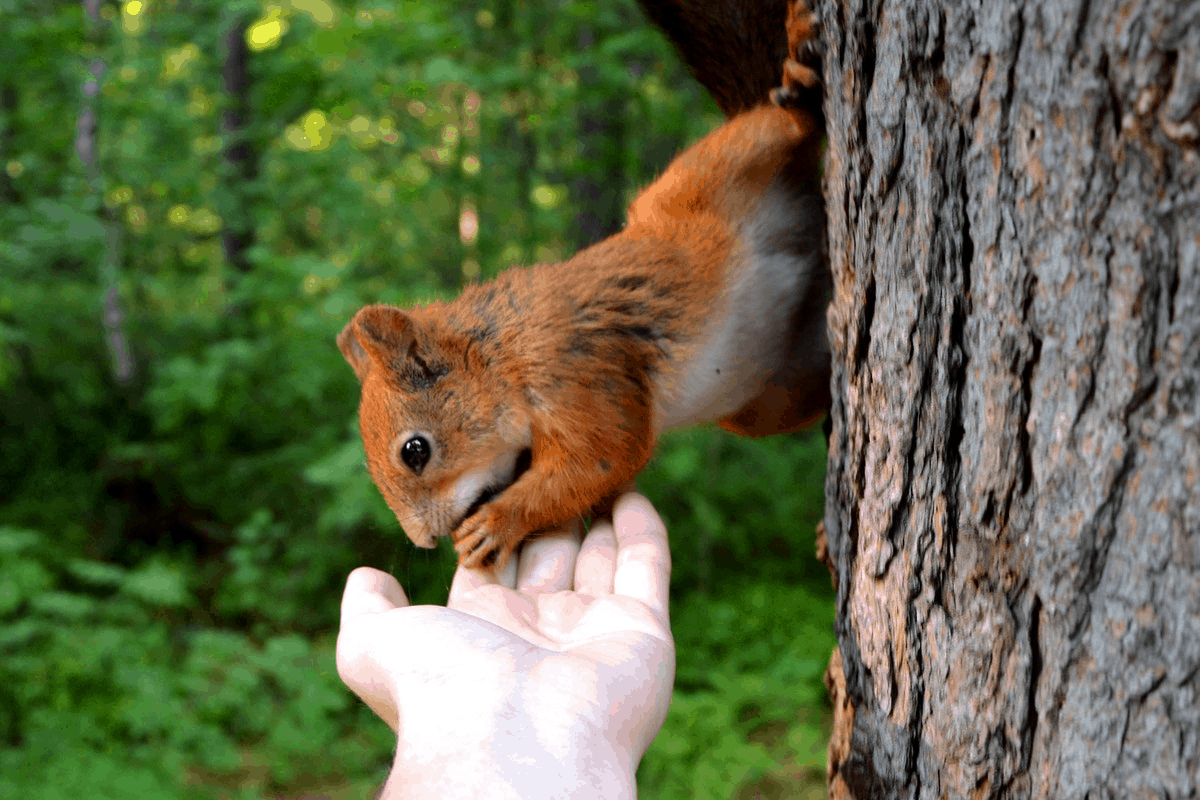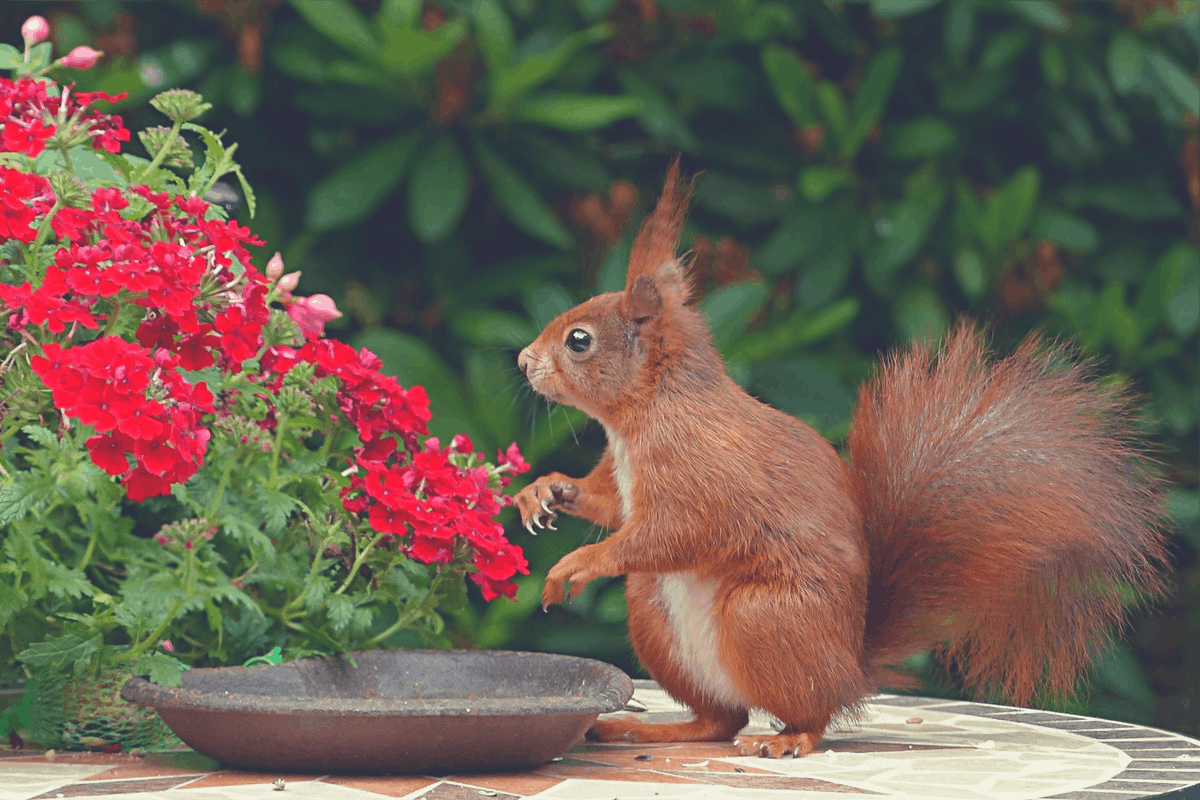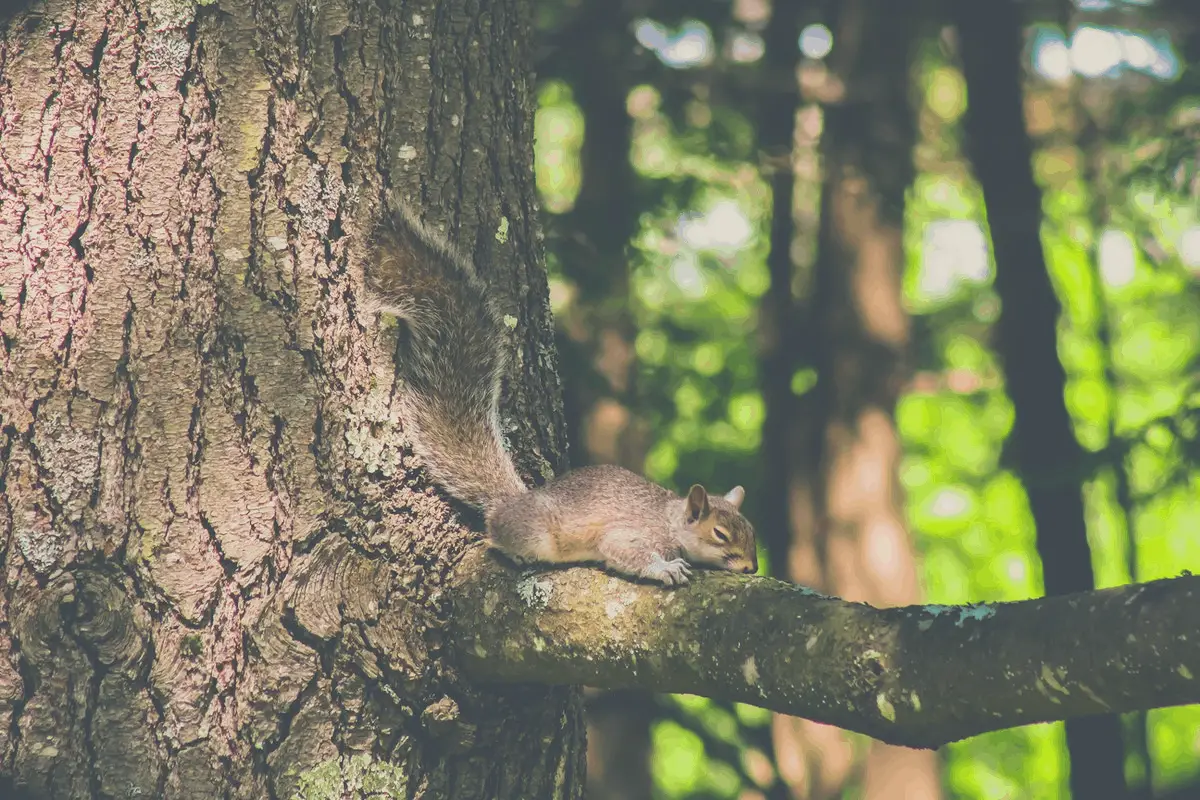Have you just moved into a new home with a backyard that is swarming with squirrels? No wonder you’re getting worked up by the presence of these seemingly cute but destructive creatures.
Seeing a squirrel or two every couple of months in the backyard is normal and should not trigger a freakout. But if the situation escalates to the point where these animals are taking over your home or garden then it is time to seek a solution.
The trick is to learn as much information about squirrels as possible beginning from their sleeping habits.
Where Do Squirrels Sleep At Night?
As you’ll get to learn in this article, various species spend the night in different areas according to where they spend most of their day as well as where they feel safest.
Squirrels spend the night in dreys, tree dens, and ground burrows depending on the species as well as prevailing conditions like winter or summer. Knowing the type of squirrels you’re dealing with can make it easier to determine where they sleep.
1. Dreys
Flying squirrels sleep in dreys at night to escape the harsh weather elements, especially during winter when outdoor temperatures may be freezing. Dreys are made from twigs, leaves, tree branches, and moss.
They’re typically molded during the summer by one or multiple adult squirrels and usually placed between the forks of tree branches. This provides stability during even the windiest nights while ensuring that the drey can support the weight of the squirrels in the habitat as well as young ones that may be born in the future.
Dreys may also be placed in basements, attics, and along the walls of a home by squirrels that live in the backyard.
2. Tree Dens

Tree dens are the shelter of choice for flying squirrels at night. They usually comprise of materials such as tree barks as well as small twigs, leaves, and moss. These dens are more common in the woods and forests where flying squirrels typically live.
However, it is not uncommon to find tree dens in tree houses and attics as flying squirrels find these areas easy to live as well.
Tree dens may also be positioned on the branches of trees or hollowed-out holes as long as you stay observant while spending time in the woods. Since flying squirrels are nocturnal, there’s always a possibility of finding them sleeping in tree dens during the day.
Have you read the article we wrote on Sleeping Under Trees? Click the link to find out the top techniques that can help you enjoy absolute comfort sleeping under a tree.
3. Ground Burrows
Ground squirrels sleep in ground-level and underground burrows during the night. These ground-level burrows can offer protection during the most extreme weather conditions in the squirrels’ environment.
Ground burrows enable squirrels that are living in cold climates to hibernate during the harsh winter months when temperatures may drop to critical levels. On the other hand, these burrows also come in handy for squirrels residing in deserts and other areas where temperatures spike excessively during the summer.
Ground burrows provide the perfect environment for estivation- a prolonged dormancy similar to hibernation during hot periods.
Where Do Squirrels Sleep When It Rains?
Squirrels sleep in dreys, tree hollows, and ground burrows when it rains as these areas provide shelter to keep their bodies dry. Tree hollows can offer more stability during the heaviest rainfalls compared to dreys.
However, squirrels do not mind a bit of rainfall especially in dry and hot regions where temperatures can be hot beyond comfort. Adult squirrels may also use their tails as some sort of umbrella during heavy downpours.
In a nutshell, squirrels build nests designed to offer protection from the weather elements including hot or cold temperatures as well as wind and rainfall. Thus, they retreat to their usual sleeping spots regardless of how bad the weather may turn.
Squirrels Sleeping On Branches
If you spend a lot of time in the woods or areas where tree squirrels are rampant, it is not uncommon to find them sleeping on branches. Squirrels nap on branches during the daytime as a means to recharge their batteries after hours of chasing prey and foraging for food.
These rodents also enjoy the cool breeze and shade offered by branches while relying on them to relax.
However, know that since branches may not be ideal for nesting especially in harsh weather, squirrels are unlikely to rely on branches as a permanent sleeping spot. The probability of retiring to tree hollows or dreys at night can be high.
Sleeping on branches also allows squirrels easy access to smaller animals that may serve as prey as well as quick access to leaves, flowers, and other food sources.
What Are The Main Types Of Squirrels?
https://www.youtube.com/watch?v=cH1z-7_Er6k
There are numerous species of squirrels spread across different parts of the world. Except for Antarctica and Australia, these rodents have been found in every continent on the planet.
Squirrels can be categorized into three main types:
- Tree Squirrels
- Flying Squirrels
- Ground Squirrels
These categories have been drawn due to the characteristics of these creatures such as where they predominantly spend their time and where they sleep at night.
Tree Squirrels
These are squirrels that live among trees unlike the others that may live on the ground, in rocks, and other habitats. They’re the most popular types of squirrels humans make contact with thanks to their ability to adapt to human-altered environments such as farms, parks, and gardens.
If you’ve come across squirrels running around your backyard, chances are they are tree squirrels. These types are diurnal meaning they sleep at night and stay active during the daytime.
Tree squirrels can be a nuisance as they typically bury food in the ground and do not hesitate to dig large areas in the backyard to find the food when needed. This can disrupt landscape plans for those with strict requirements.
Tree squirrels will not hesitate to nest in basements, attics, and sheds to chew on wood, electrical wires, and anything they come into contact with.
Flying Squirrels
This is another type of squirrels that live on trees. Unlike their tree squirrel counterparts, these species can glide from tree to tree in a flight-like motion. This property is thanks to a furry, parachute-looking membrane that covers the wrist to the ankle, known as the patagium.
Another distinct feature of these species is that they’re nocturnal meaning they stay more active at night to minimize the risk of predators. Flying squirrels are omnivorous and feed on seeds, flowers, insects, tree sap, spiders, and bed’s eggs.
These squirrel types have been successfully bred in captivity and used as pets by humans in many instances.
Ground Squirrels
These are squirrels that live predominantly on the ground, unlike their counterparts that prefer trees. Some species may also live in the ground where they get access to food and mating partners.
One of the most remarkable feats of these squirrels is their ability to rise on their hind legs whenever they sense the proximity of predators and other kinds of danger. They then send screeching calls to alert other members of the family of the impending danger so they can make quick dashes to safety.
Ground squirrels may be found in cemeteries, golf courses, fields, pastures, rocky outcrops, and similar areas. They’re omnivorous and rely on diets rich in nuts, fruits, and seeds as well as rats, mice, insects, fungi, and eggs.
Do Squirrels Roam At Night?
Some squirrel species are crepuscular meaning they’re more active between the hours of dusk to dawn. It is not uncommon to find these animals roaming around at night in the quest to find food and mating partners.
Tree species such as the Gray, Fox, and Red squirrels are more unlikely to be found roaming at night due to their natural diurnal tendencies. These types of squirrels are typically active during the daytime and retreat to their nests to rest at night.
Flying squirrels are also more likely to be caught roaming at night because they’re nocturnal.
How To prevent Backyard Squirrels From Invading Your Home

If your backyard has been taken over by squirrels, it is only a matter of time before they invade your home. This is why it is important to take the necessary measures to keep them at bay. A few ways to achieve that include:
Seal Cracks: If there are cracks and crevices in and out of your home, sealing them promptly can be important. Remember, once these animals invade your basement or attics, getting rid of them can be a nightmare.
Professional Exterminators: Professional exterminators can eliminate any thriving rodent populations in your home including squirrels. They’re experts at identifying whatever may be making your home more attractive to these animals so the right measures can be taken to keep them at bay.
Conclusion
Squirrels sleep in dreys, tree hollows, and ground burrows after a long day of foraging for seeds, flowers, and nuts as well as insects, spiders, and even rodents such as mice and rats.
These nesting areas provide shelter for squirrels to not only stay hidden from potential predators but weather elements such as cold and heat too. During heavy rainfall, squirrels also retreat to their nests to stay as dry as possible.
Dreys and tree dens are typically made from tree barks, branches, leaves, and mosses to provide stability for multiple squirrels. These creatures usually build bigger nests to accommodate their young ones after giving birth.
